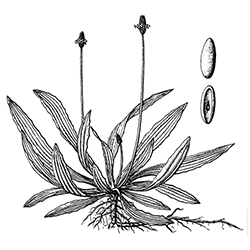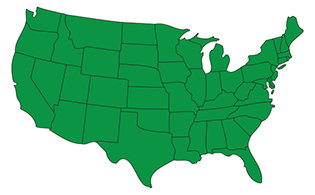

Buckhorn Plantain
Plantago lanceolata
Buckhorn Plantain is a perennial broadleaf weed that is also commonly called English Plantain, Narrow-leaved Plantain, Rib-grass, Ribwort, Black-jacks and Plantago lanceolata.
Identify

Rosette

Entire

Lanceolate
Buckhorn Plantain can be identified by its narrow leaves and parallel running veins. Its leaves grow somewhat vertically, except when found in grass where leaves tend to grow more horizontally, often twisting or curling. Buckhorn Plantain has fibrous roots that are produced from a short, thick and tough woody stem—much like an underground taproot. It also has leafless stalks that are unbranched and ridged, terminating in dense, cylindrical, cone-like spikes or heads. Flowering from April through October, this broadleaf weed blooms small flowers that are densely crowded together in whorls all along the cone-like spike. Each flower is scentless and is eventually replaced by a small, oblong seed capsule.
Life Cycle
This broadleaf weed prefers disturbed areas, thriving in lawns, pastures, fields and waste grounds and also growing along roadsides and railroads. Buckhorn Plantain can be found throughout the entire continental United States and most parts of Canada.

Control
Proper cultural practices, such as proper mowing and watering, can help to prevent Plantago lanceolata by creating dense grass, which inhibits this broadleaf weed’s ability to grow. Physical removal (i.e., pulling weeds) can be effective, though you run the risk of spreading the seeds to additional areas of your lawn and landscaping.




Facebook
X
Youtube
Copy Link
Email